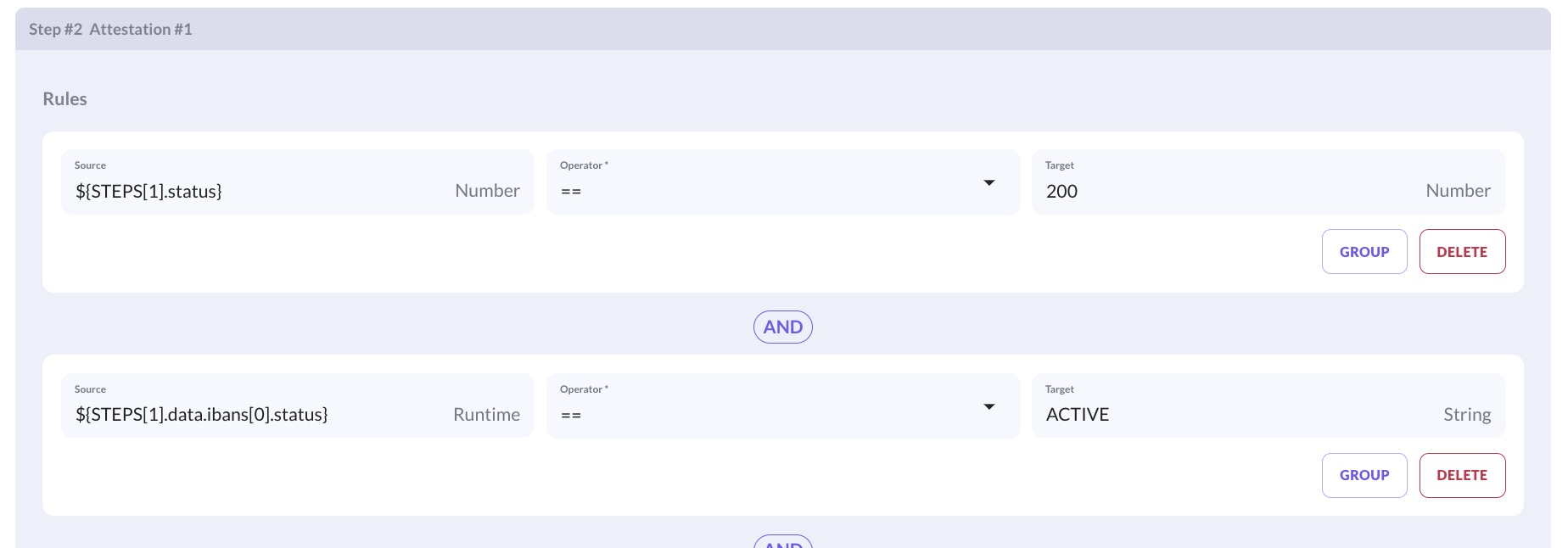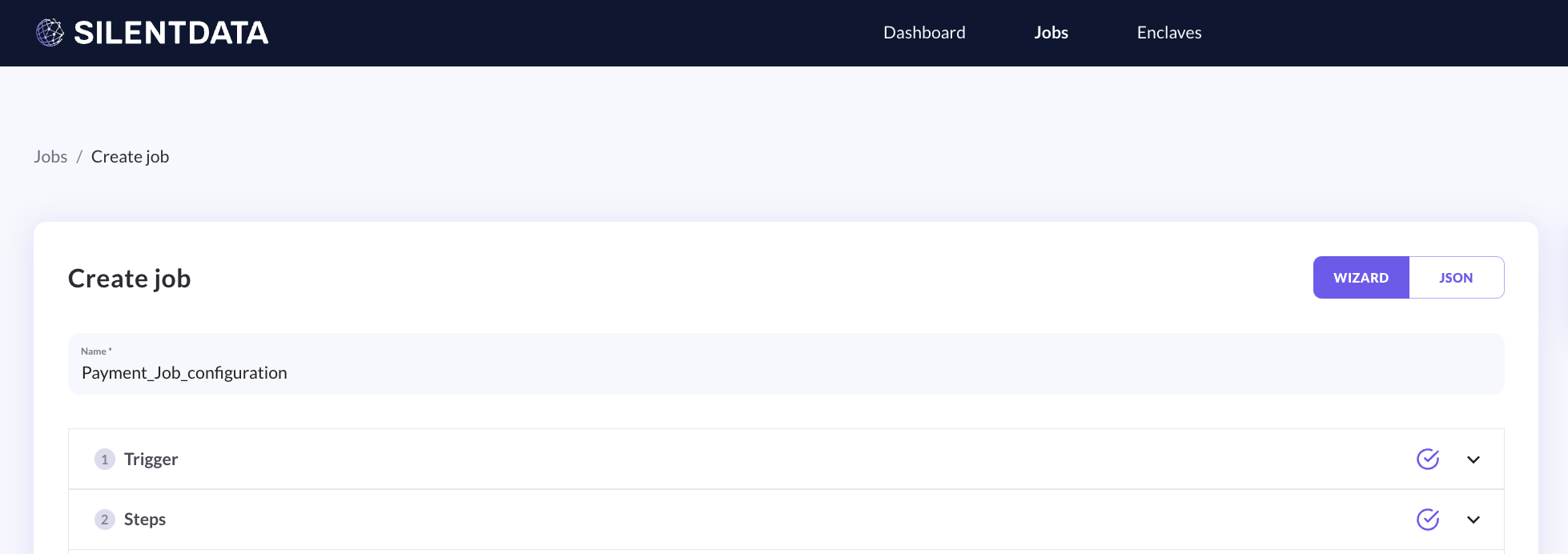The steps are the core items to customise the job. Here we explain the Attestation Step.
The scope of the attestation step is to complete checks on the data retrieved from the API calls or on any other valuable information you need to check.
The basic element of an attestation step is a Rule. A rule is composed of a source, an operator and a target.

Figure 1 Attestation Step
In the attestation step, it is possible to use variables and data sources. If you want to know more, check the dedicated section Use Variables and Data Sources.
In the source, you can select the field or property which needs to be checked. In the operator, the user can select different logical operators. The target is the value with which the source should be compared to. This can be another property from the payload of the API or a constant value.
To help with possible types mismatch, Silent Data [Oracle] will guide you on the types with the validation in the fields (Source and Target). During the configuration you can see how the property inserted is considered, as is its type (string, number, boolean, or float).
Some examples as follow:

Tip: please always test the types of both the variables, Source and Target, before saving the configuration. If triggering the job in the case of different types in a Rule, the enclave code cannot resolve the type conflicts and the Job will return an error. Use always the Test function before publishing the job.
You can use arrays as sources for the attestation rules. Do you want to know more about types supported and allowed operators? Steps and allowed operations.

Figure 2 Steps configuration completed
Check out the next article on how to configure the Results.